2022 Year in Review
2022 has been an incredible year of changes within the macro landscape.
We’ve seen one of the first major, sustained bear markets in many investment professionals’ careers, a war in Europe for the first time since the 1940s, the highest levels of inflation seen since the 1980s – regime shift after regime shift, the challenges and opportunities presented by markets have been ceaseless.
The priorities of consumers the world over have changed – we’re not buying bread makers or struggling to download Zoom anymore, people are looking for remote working opportunities, worrying about inflation and geopolitics.

To review the year that was, we’ve put together a pack of charts that show the evolution of the macro environment over 2022.
This represents a longer format than our usual pieces, but we take comfort that even if a picture tells a thousand words, we would still need over 400 charts to match War & Peace.
The Return of Inflation
2022 saw global markets take any portfolio positioned for ‘transitory’ inflation, take it behind the shed and give it the “Ol’ Yeller” treatment.
Global inflation rates are currently at levels not seen since the 1980s:

As with many aspects of global macro, markets have been keeping a keen eye on the United States, seen as both a leading indicator for other markets’ inflation as well as one of the guideposts used to determine the future of monetary policy by one of the most influential central banks in the world, the Federal Reserve.
On this front, Core CPI (which excludes energy and food inflation) remains at the most elevated levels since the early 1980s, and is explicitly Fed Chair Powell’s preferred metric for monitoring price stability (or lack thereof):
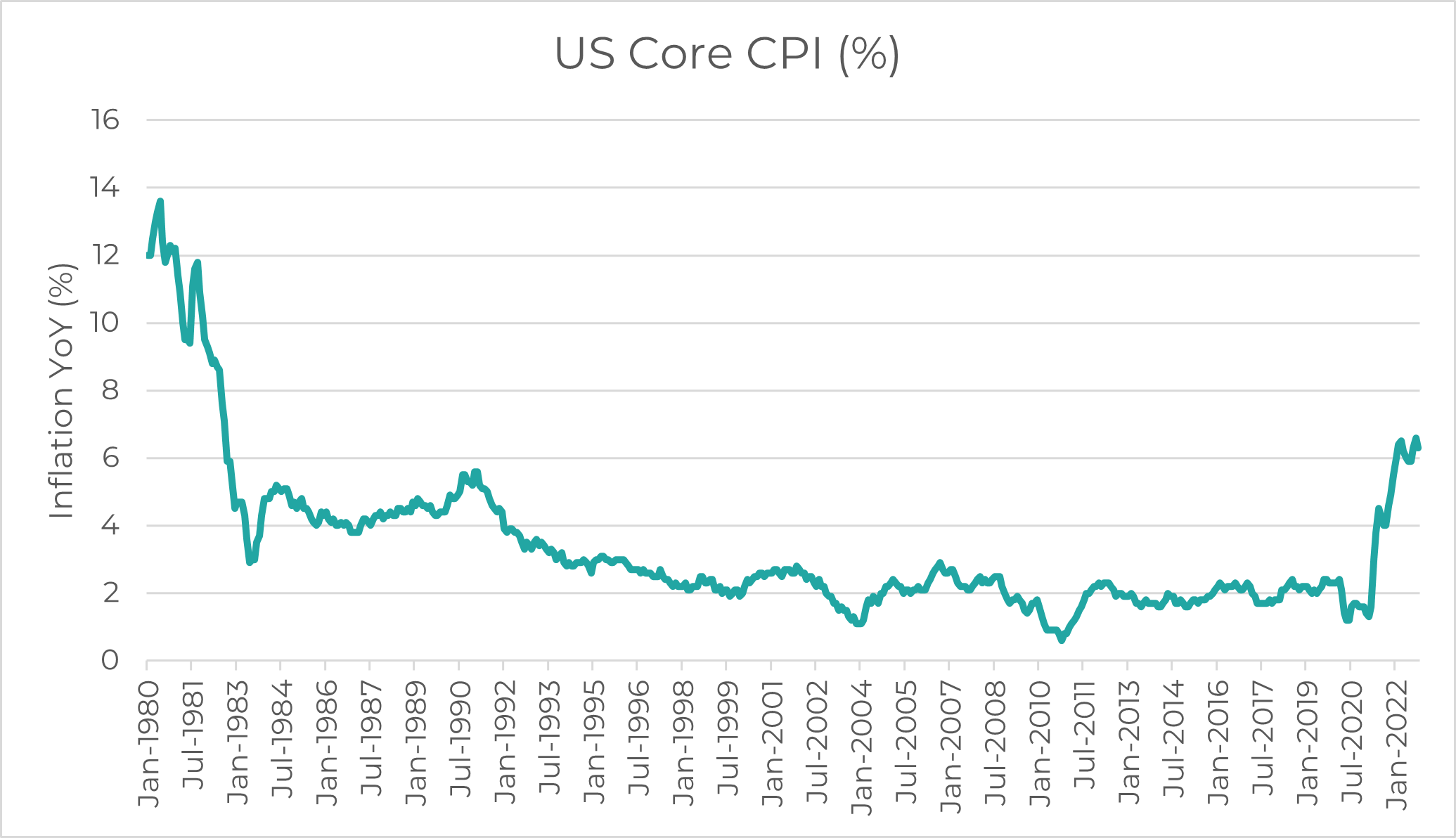
The source of this inflation began as broad-based pressures throughout the real economy. However, the YoY rate of goods inflation has been declining since the first half of the year, leaving the significantly stickier Services component to contend with:
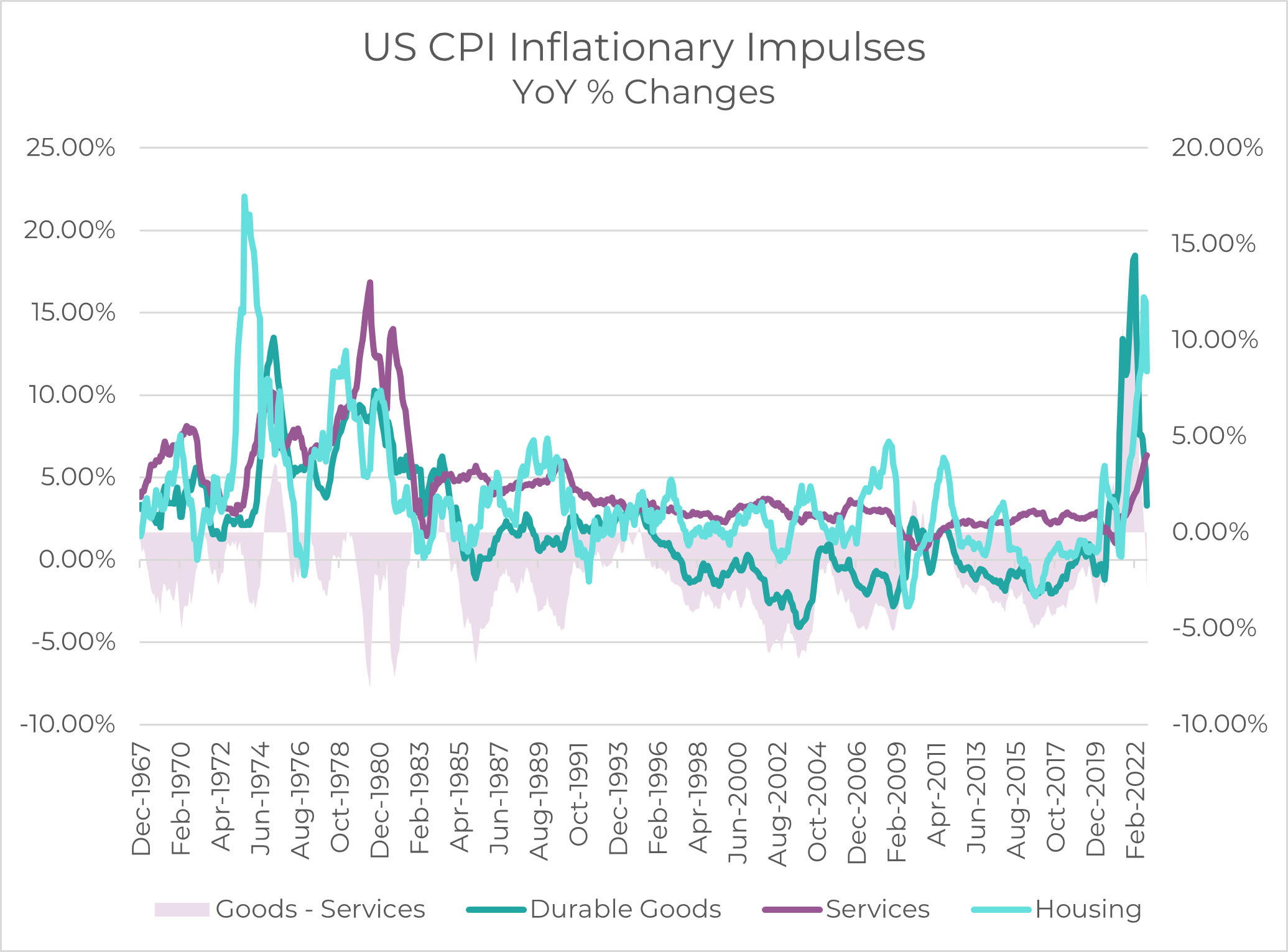
This may prove to be the thorn in central banks’ side, as services inflation can still have meaningful effects on future readings as far as three years out – this has particularly been the case in the past two decades.
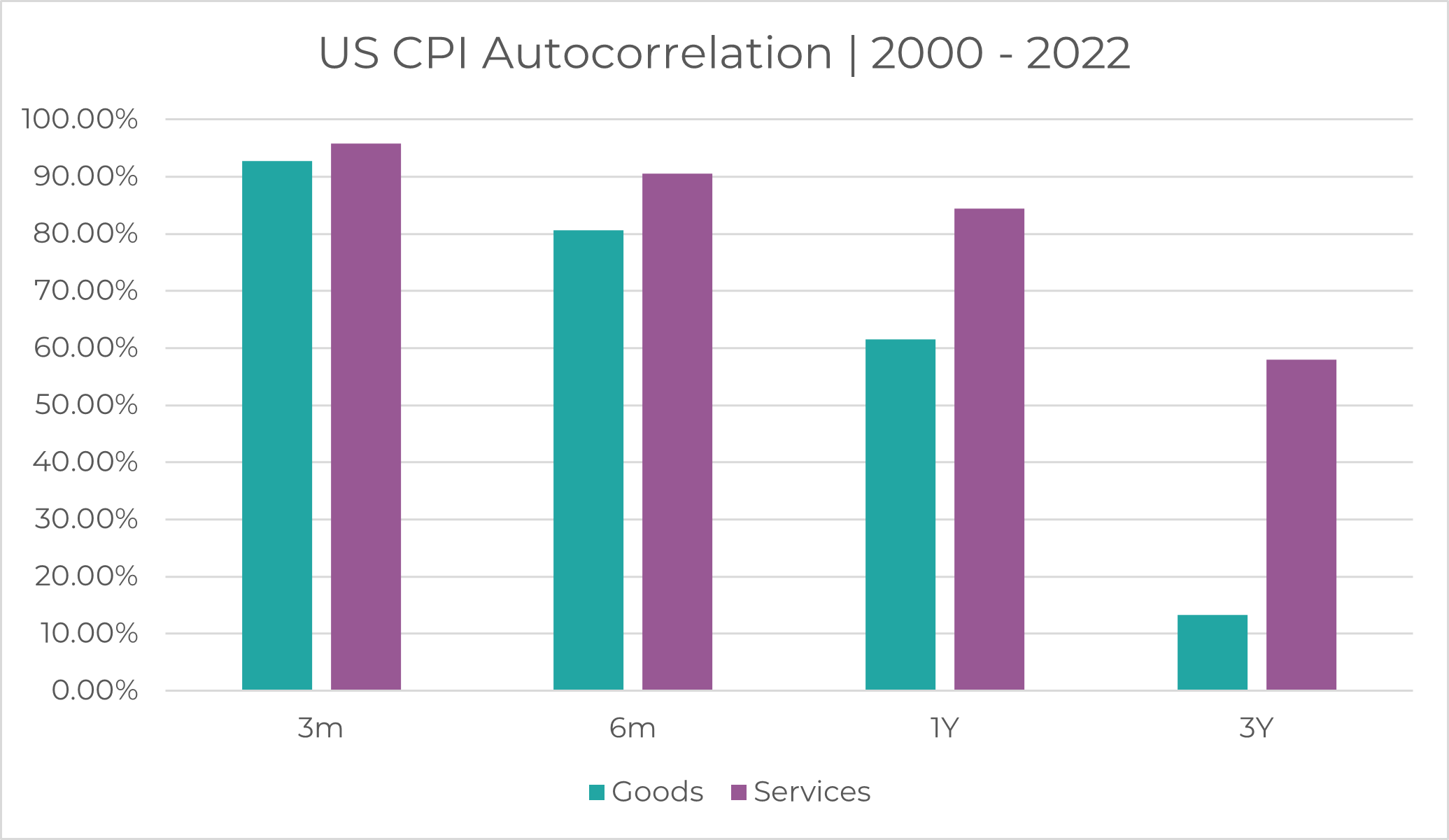
A positive sign for the Federal Reserve is a moderating level of expected inflation. The Cleveland Federal Reserve publish a 1-year expected inflation metric, which showed signs of peaking in December:
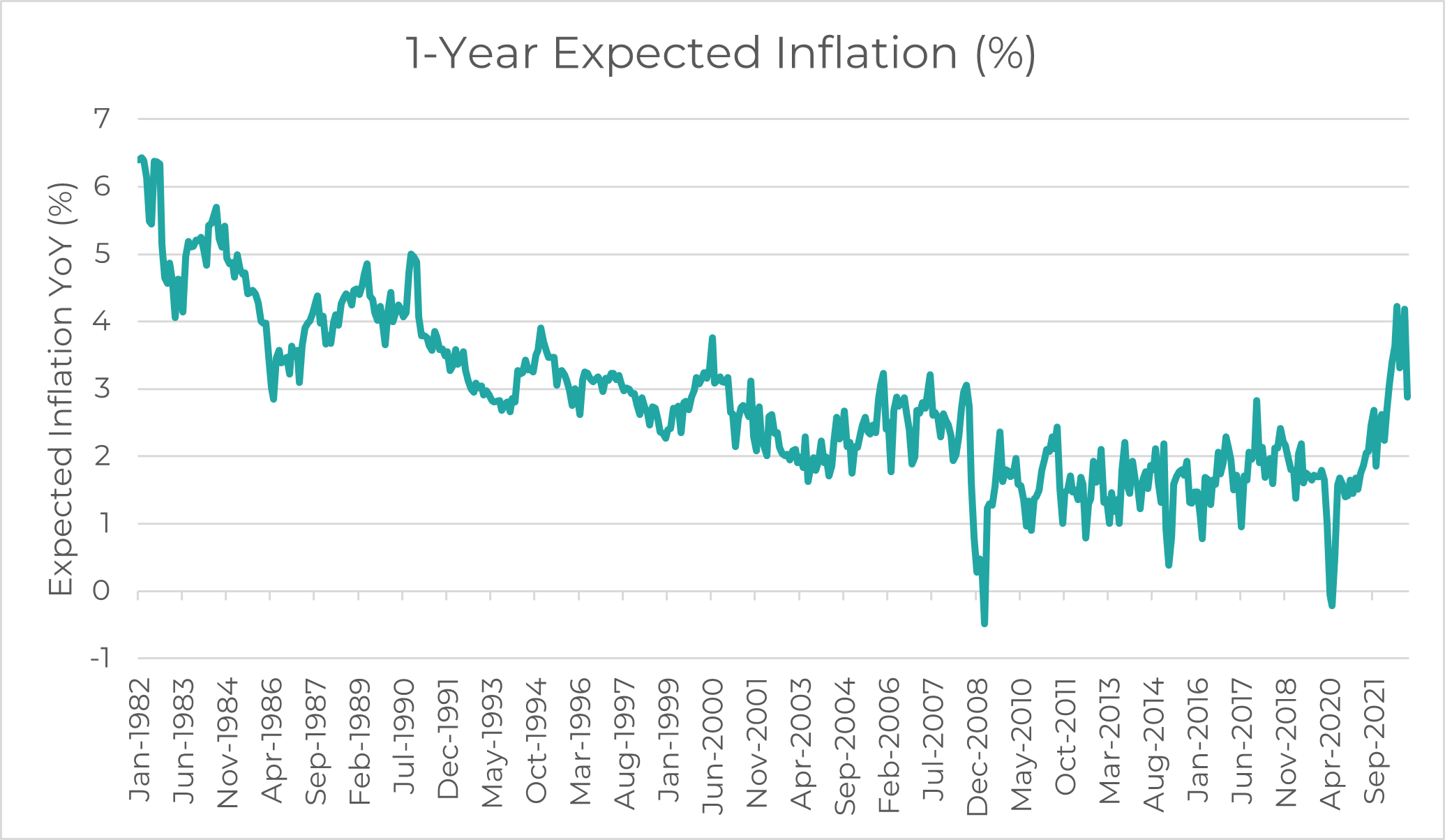
Another element of comfort is the measurable easing of global supply chain pressures, one of the catalysts for the supply-side/goods inflation the world has experienced over the past year:
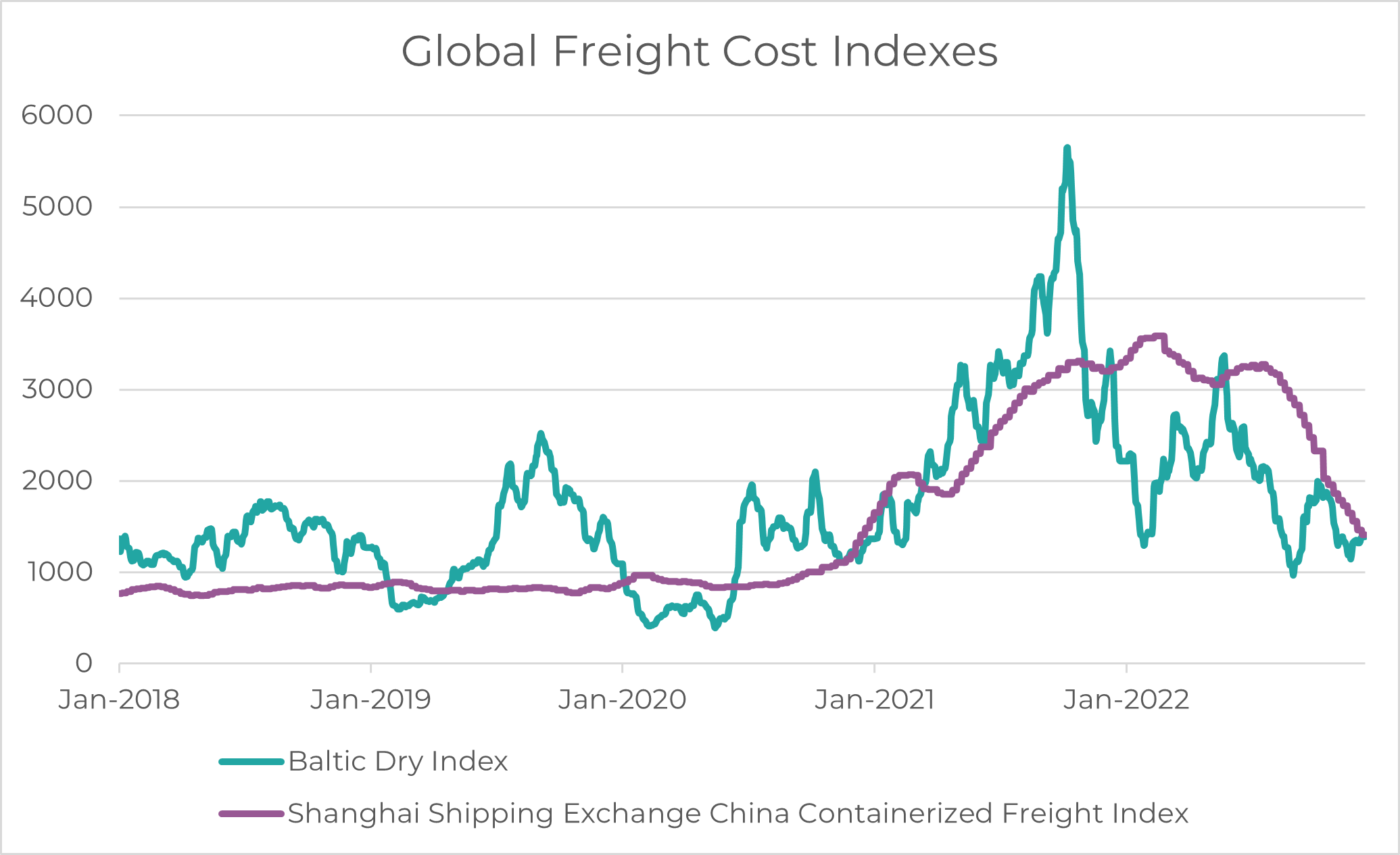
Working 9 to 5
With global unemployment levels generally sitting at historic lows, continued shortages of workers across key sectors such as transport, services and manufacturing and still rising wage pressures, it seems clear that the labour market is at one of the tightest levels in memory.
This has been a developing theme over 2022, where less interest rate sensitive economies (such as the US, with a primarily fixed-rate mortgage landscape) must look to crush inflation through damaging aggregate demand – this translates loosely to “we have to weaken the labour market so people spend less”.
An interesting chart to show the strength of the labour market is known as the Beveridge Curve, which shows the relationship between job openings and unemployment.
We can see in both the US and Australia, the labour market has experienced rapid tightening over the past 24 months, sitting at some of the highest levels seen in the past 20 years.
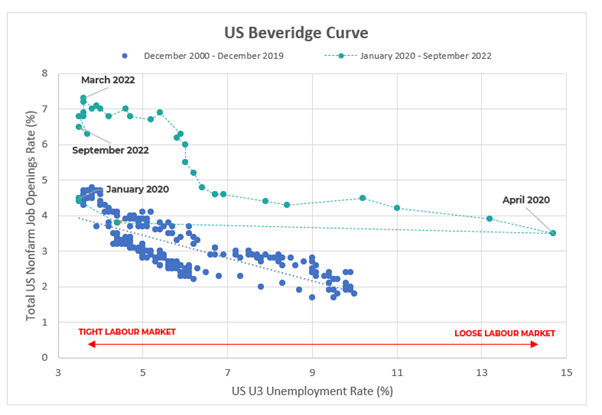
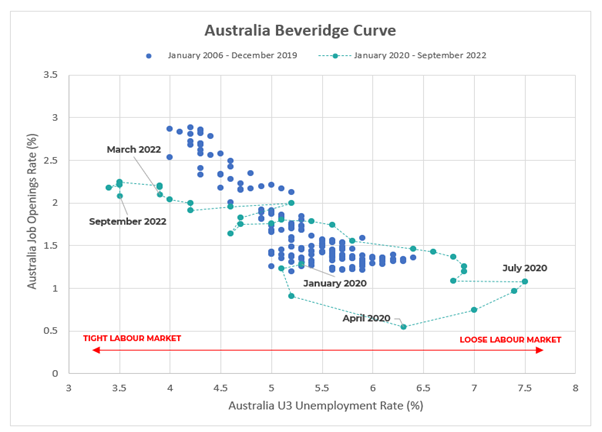
Turning our attention back to the US, we can see that relative to other developed economies such as Australia and the UK, the US has had a structural issue with a declining participation rate for 30 years:
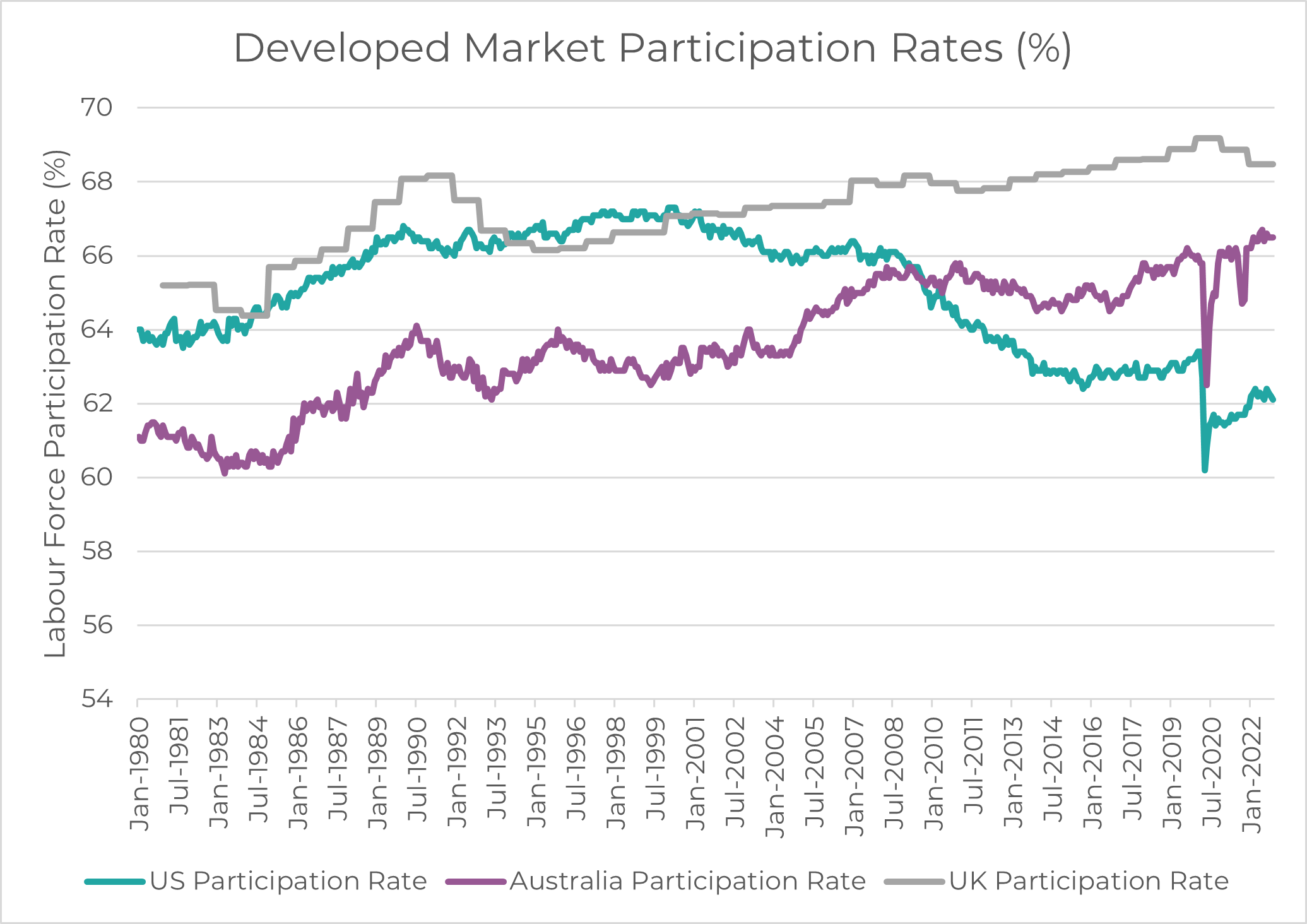
A tight labour market and low unemployment is generally broken by (or broken for) a recession – the dramatic rise in unemployment during each of the grey bars in the below chart are telling:
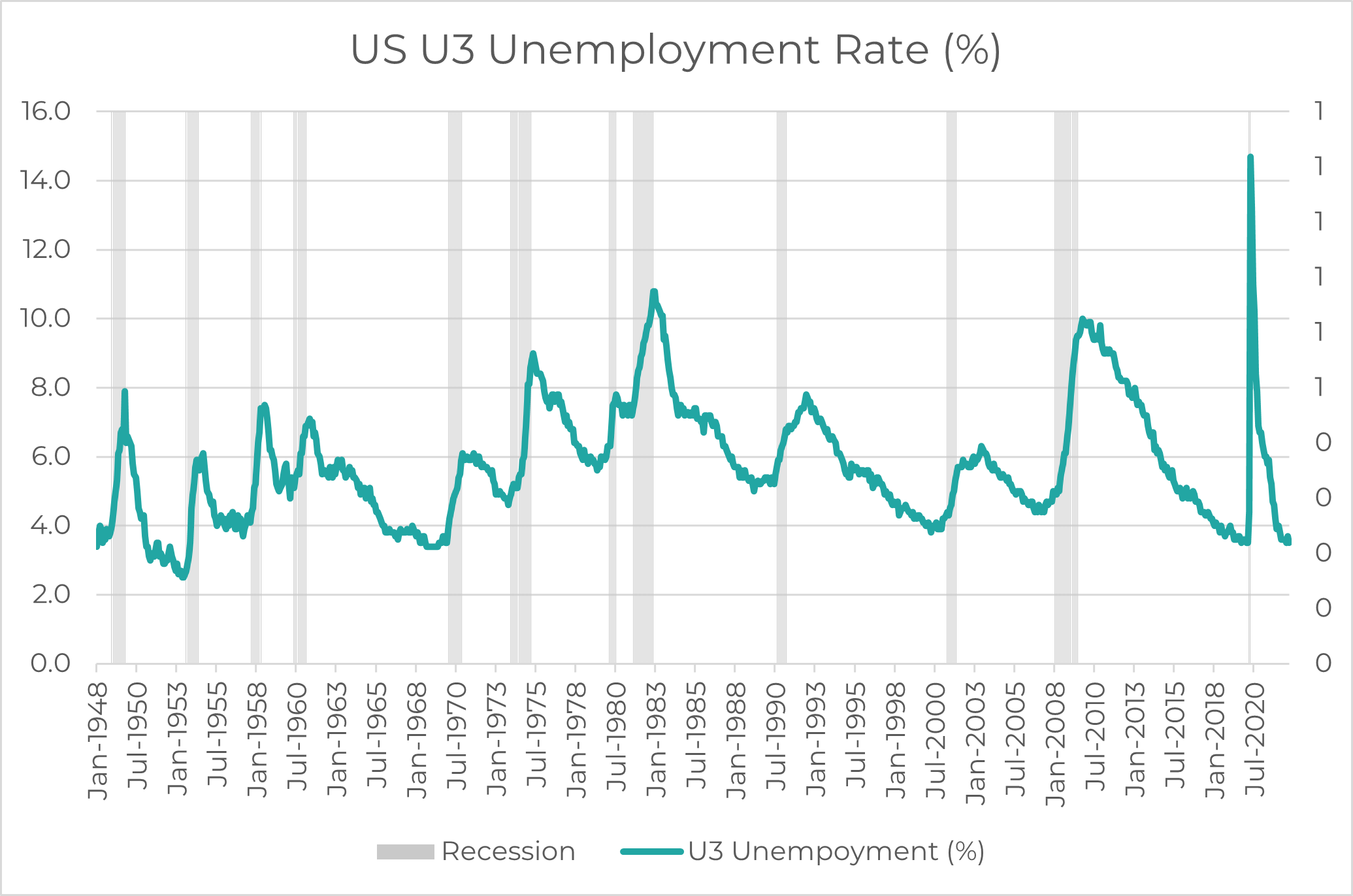
And yet 2022 might have already seen the start of some demand destruction at the household level, as inflation outpaces hourly earnings by a significant margin – in fact the US has seen negative real wages (YoY) since the start of the COVID pandemic, a phenomenon which has only deepened this year.
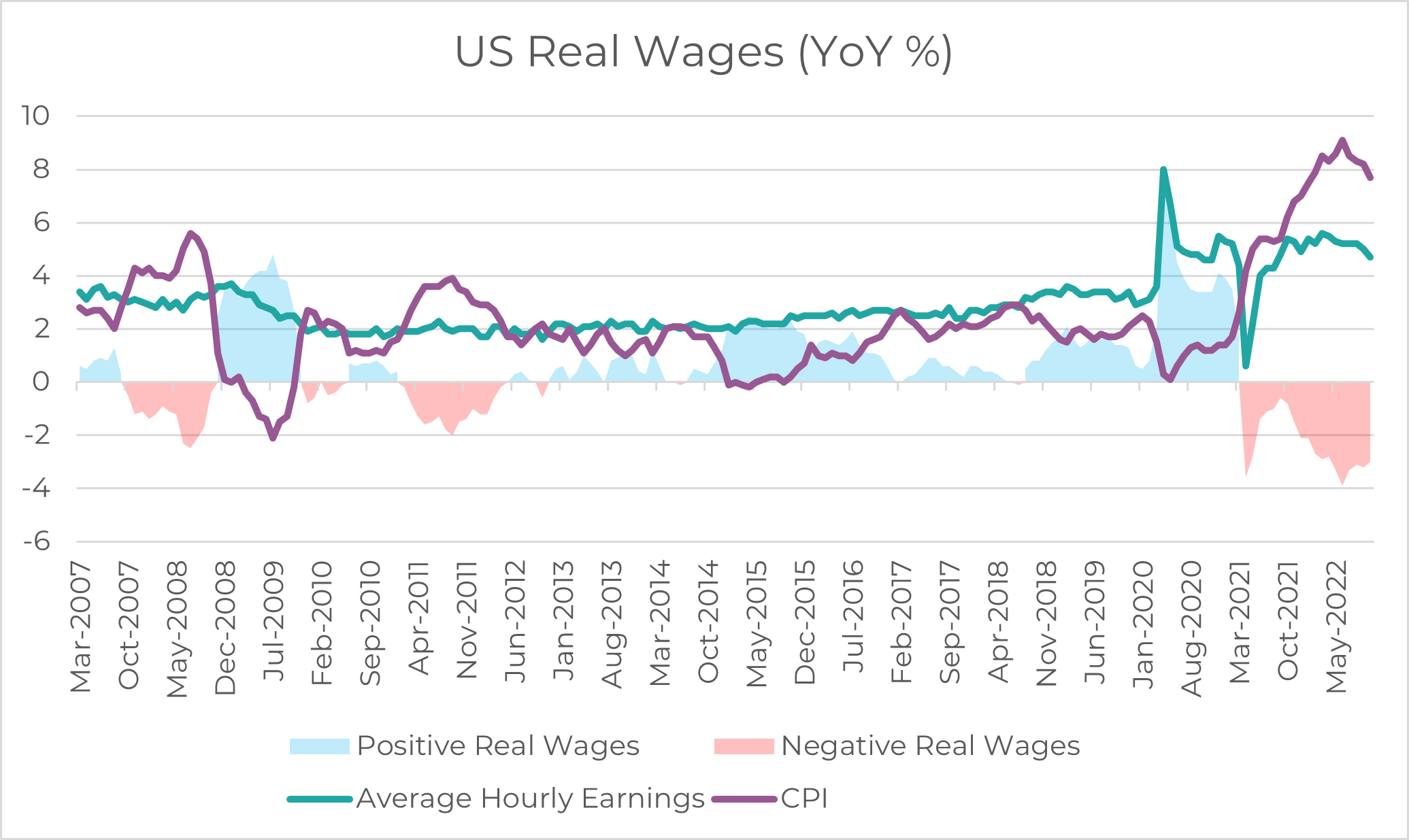
Where has this been showing up? In the way that households are funding their expenses – the savings from stimulus checks are gone, and with the cost of debt AND the cost of living rising, credit cards have had to come in to take the load:
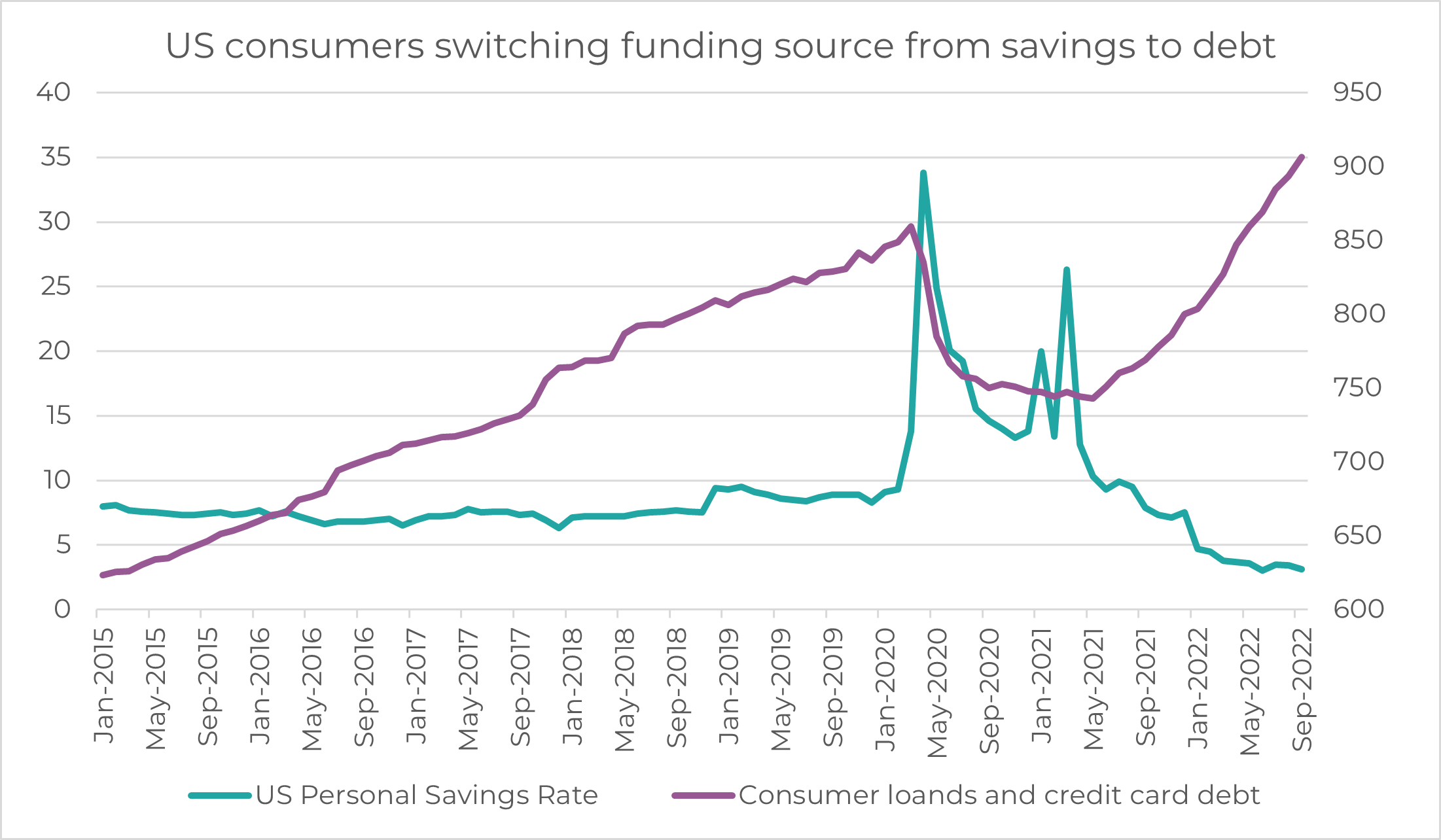
Getting Real About Rates
As well as inflation, global interest rates have been on the rise throughout this year, albeit a little after inflation started to show itself in force. Global nominal interest rates are approaching their highest levels since the GFC in many economies:
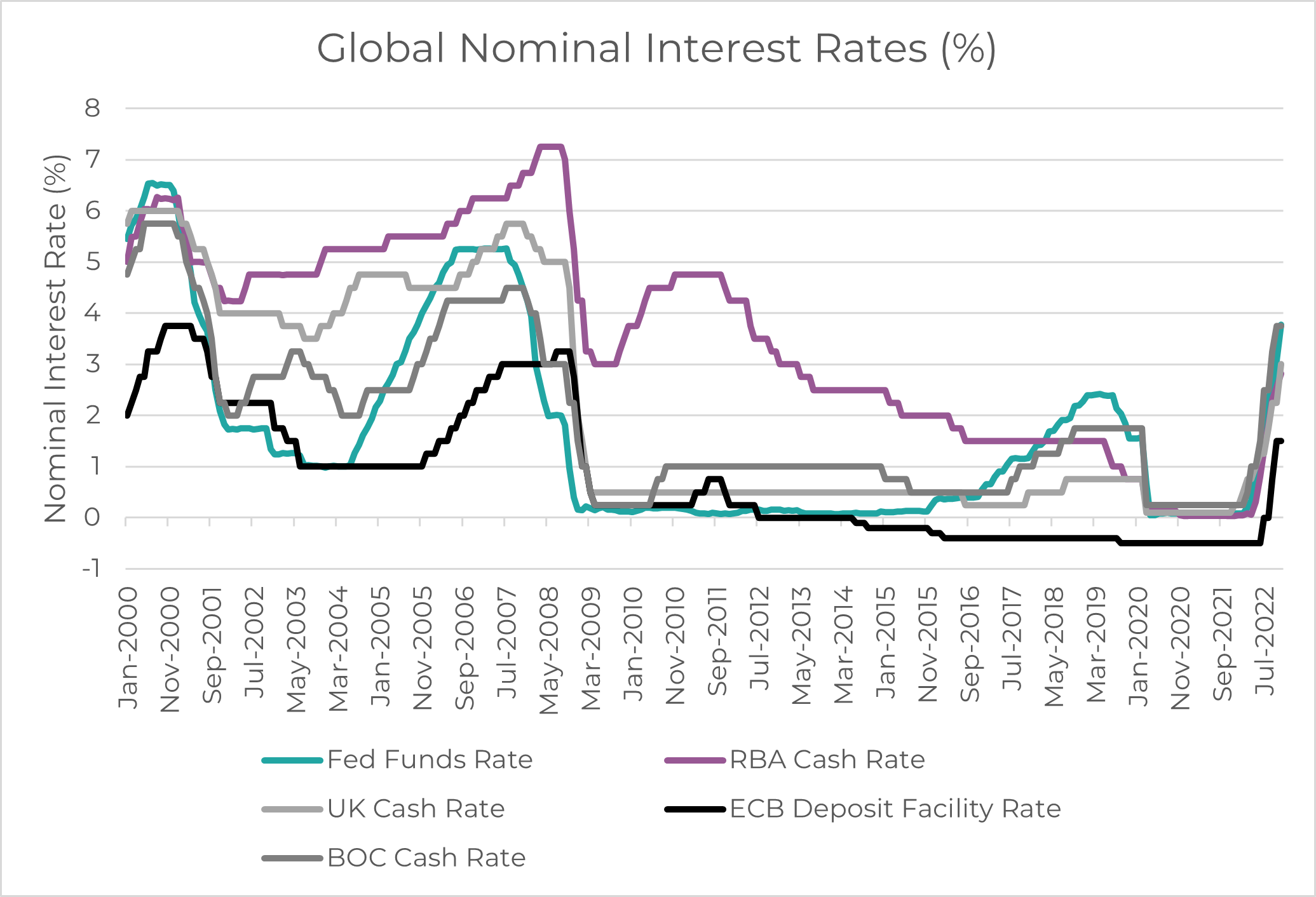
Of course, nearly all investors are aware by now of the massive volatility which has been seen in government bonds throughout 2022.
One element of this has been the yield curve, which (particularly in the US) has bent itself into a particularly odd shape. The level of inversion and shape of the curve is nearly the mirror image of its shape this time last year:
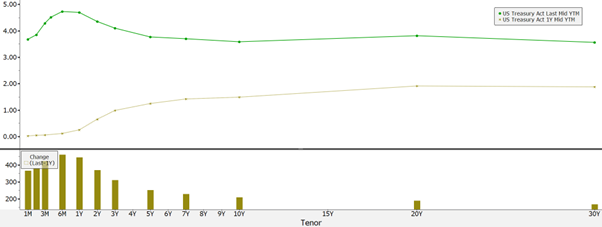
2022 could also be called the year real rates returned – after ~3 years of near-zero or negative real rates, US and Aussie rates have begun to outstrip inflation meaningfully. The chart below shows the 10-year inflation-linked bonds for Australia and the US, with the aggressive rally into positive real rates coinciding nicely with the destruction seen in long-duration, high-growth assets such as technology stocks:
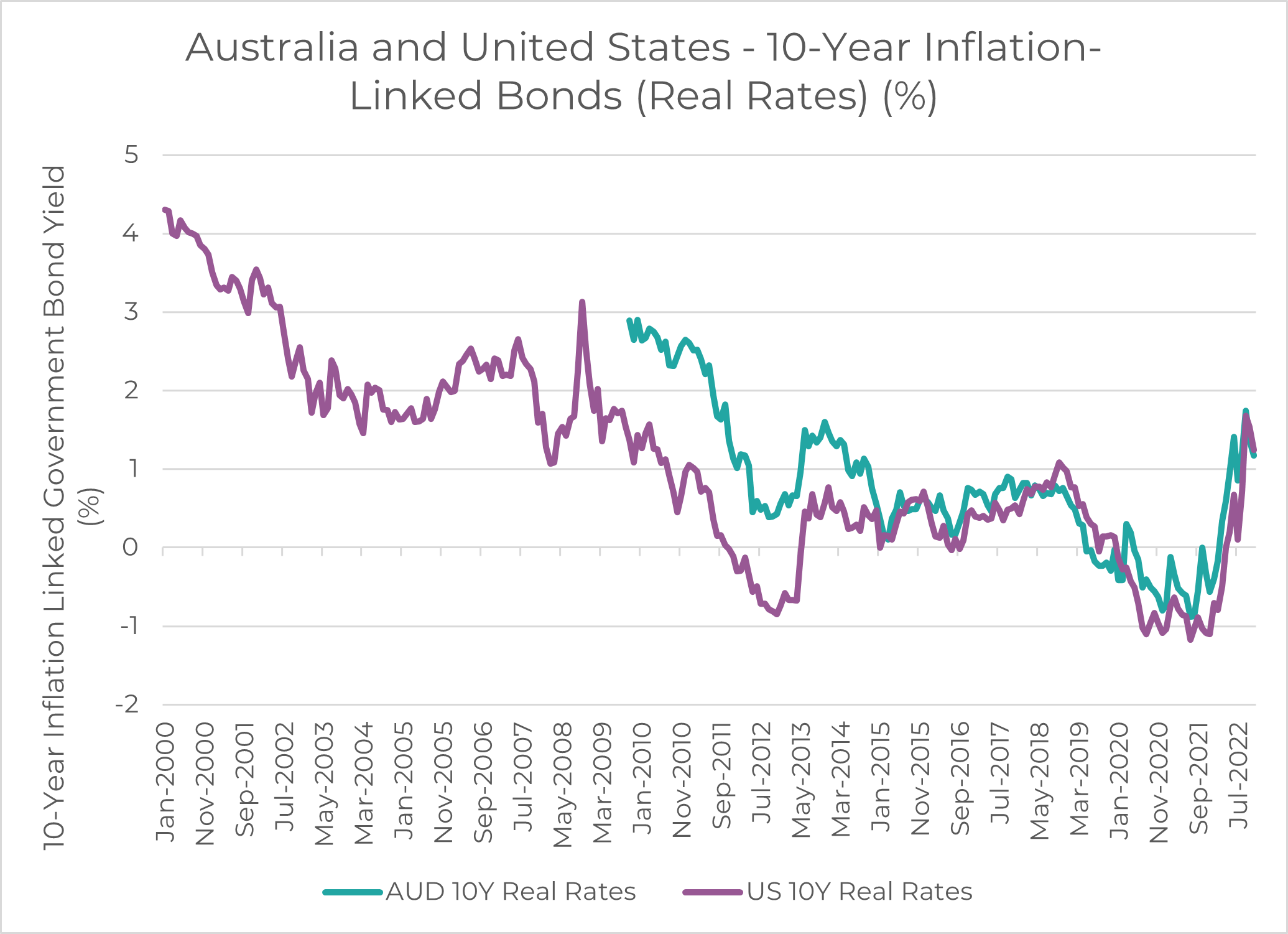
Another aspect that has created havoc in rates and equities? Central bank balance sheets, or more specifically the shrinking thereof.
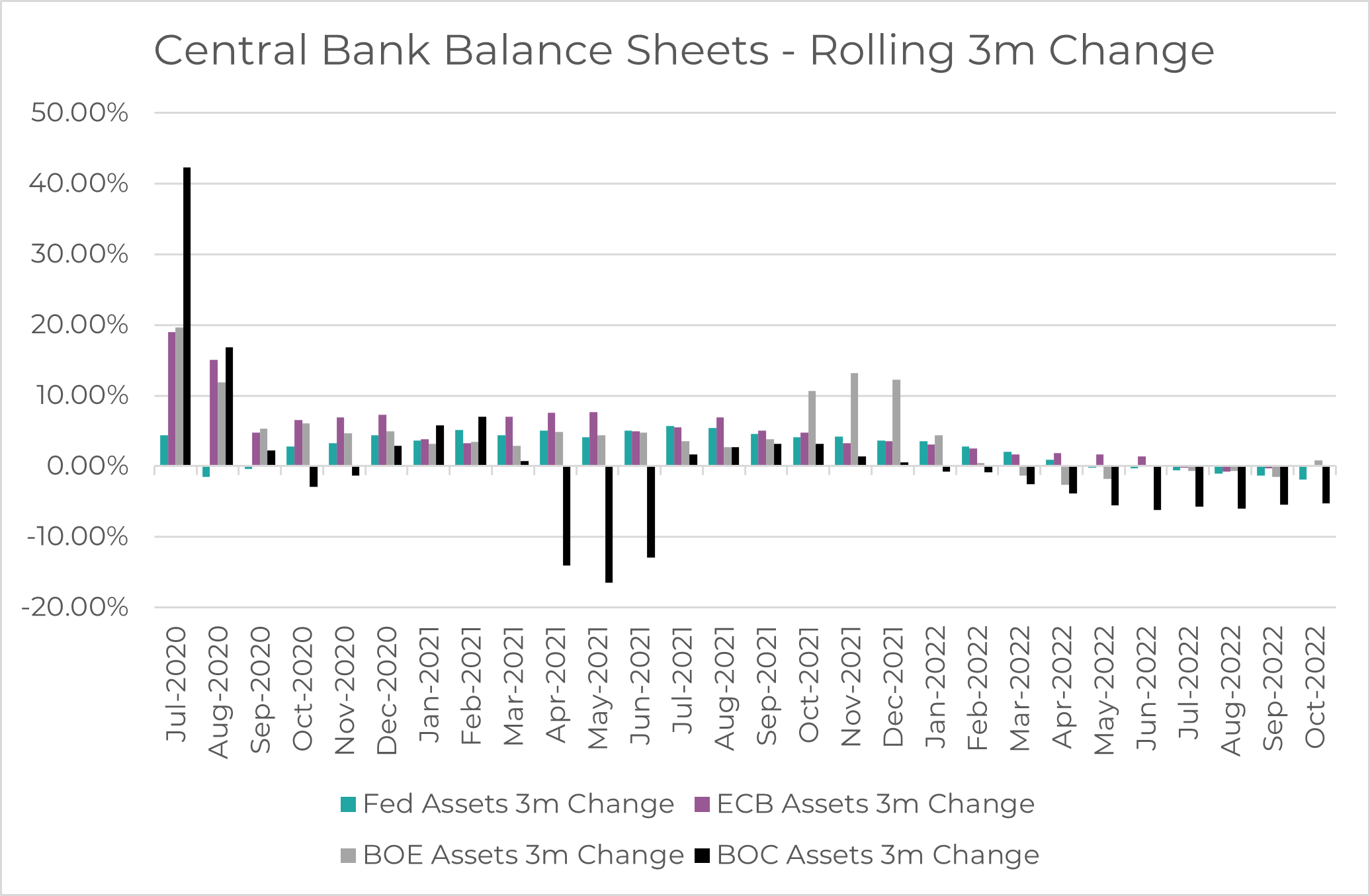
“Commodity Supercycle”
Commodities were a trade that many astute macro investors were positioning into at the end of 2020, as a tried-and-true inflation hedge. Then the Russia/Ukraine conflict came in and kicked prices up to 11, and brought massively accelerated inflationary pressures along with it.
Today, however, energy prices in particular have moderated back to levels seen at the end of 2021:
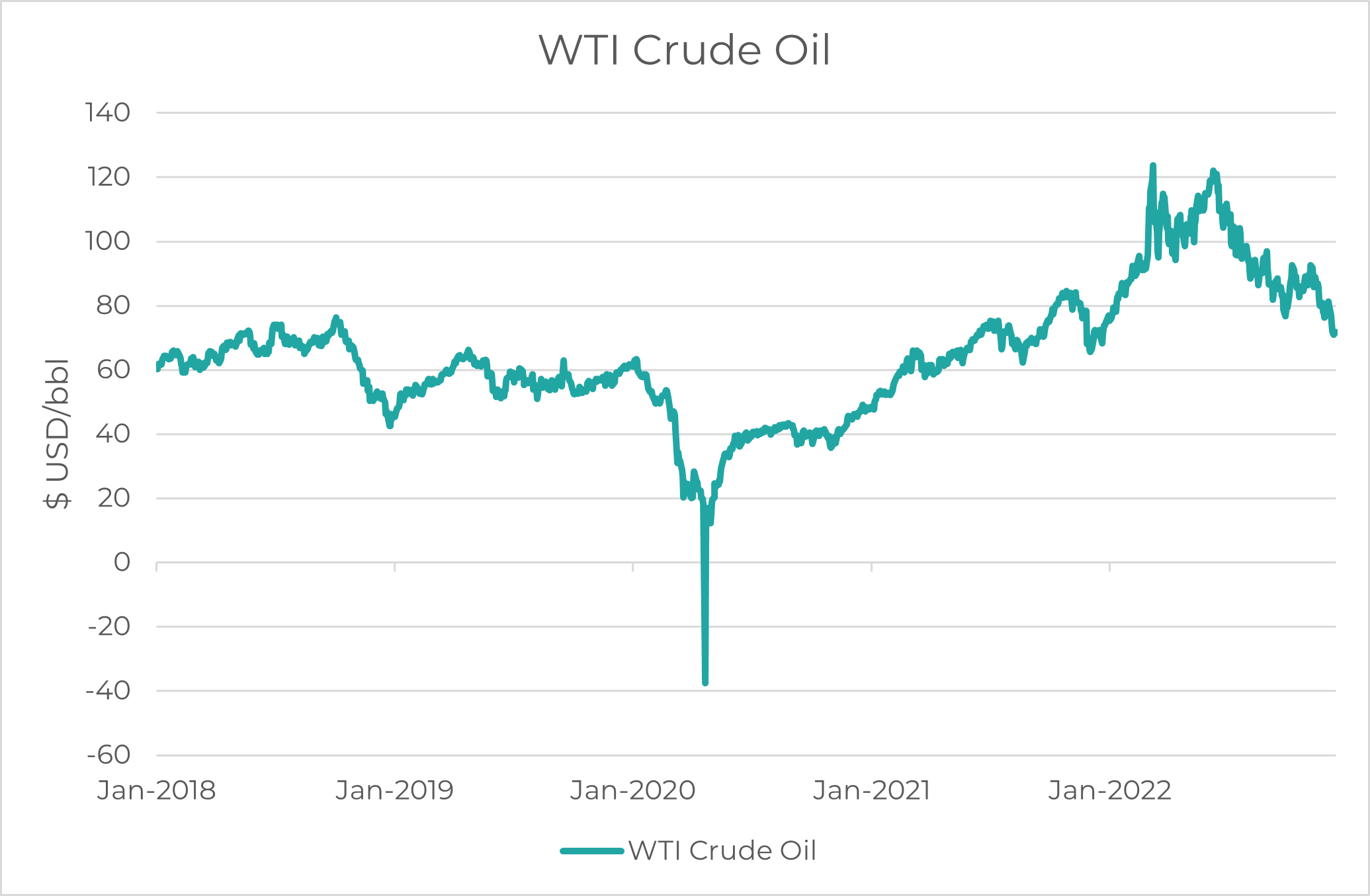
Industrial metals are a slightly more mixed story – iron ore has recovered from a sell-off on the back of recent hopes around a reopening in China and support of their housing market, whilst Copper suffered throughout the year on global growth slowdown fears before rebounding in the past few months (paging Dr Copper).
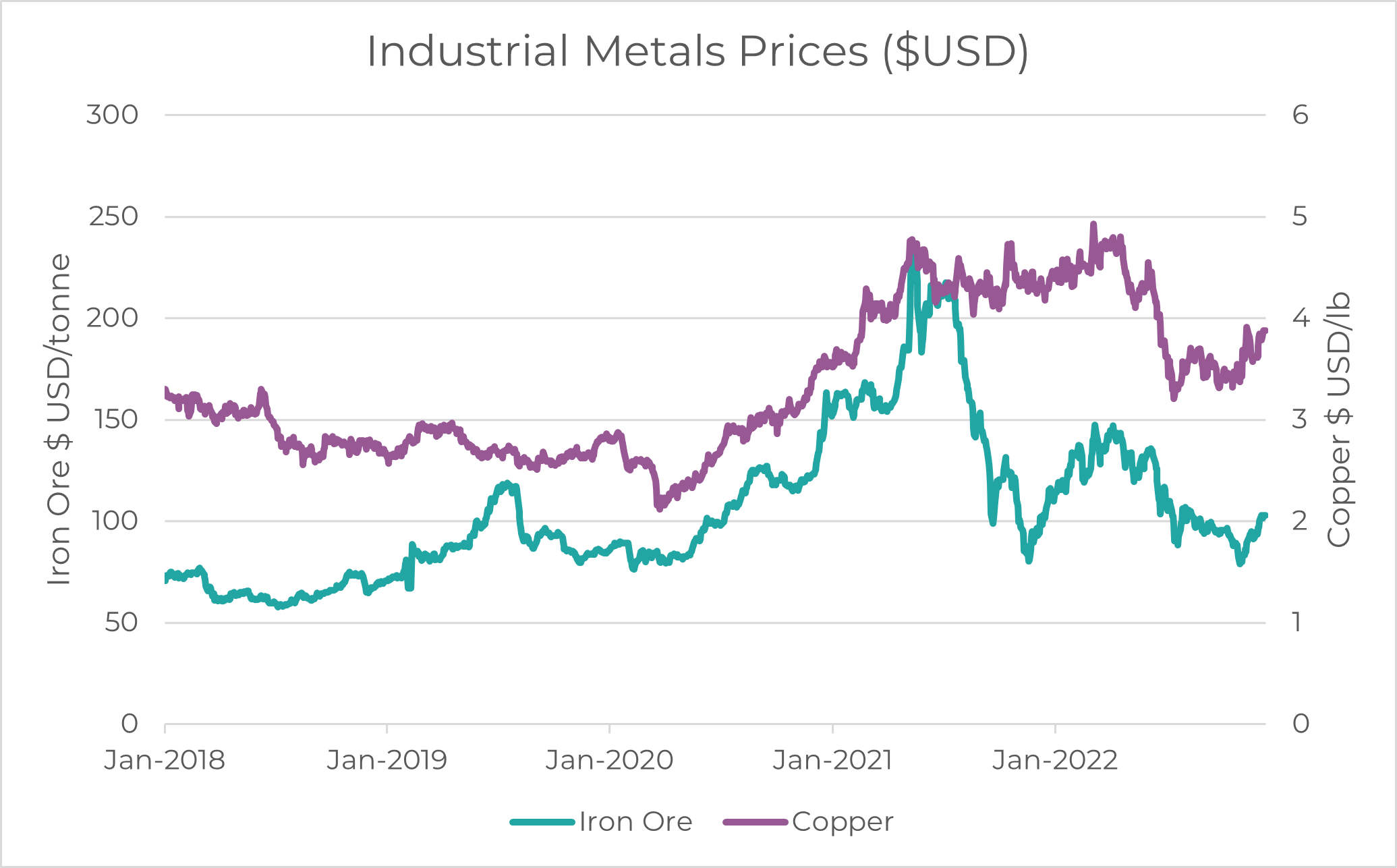
This
volatility in global commodity prices has of course been impacted by the meteoric
rise in the strength of the US Dollar, which has been one of the best-performing
assets of the entire thanks to the Federal Reserve’s more aggressive hiking
policy than many other central banks.
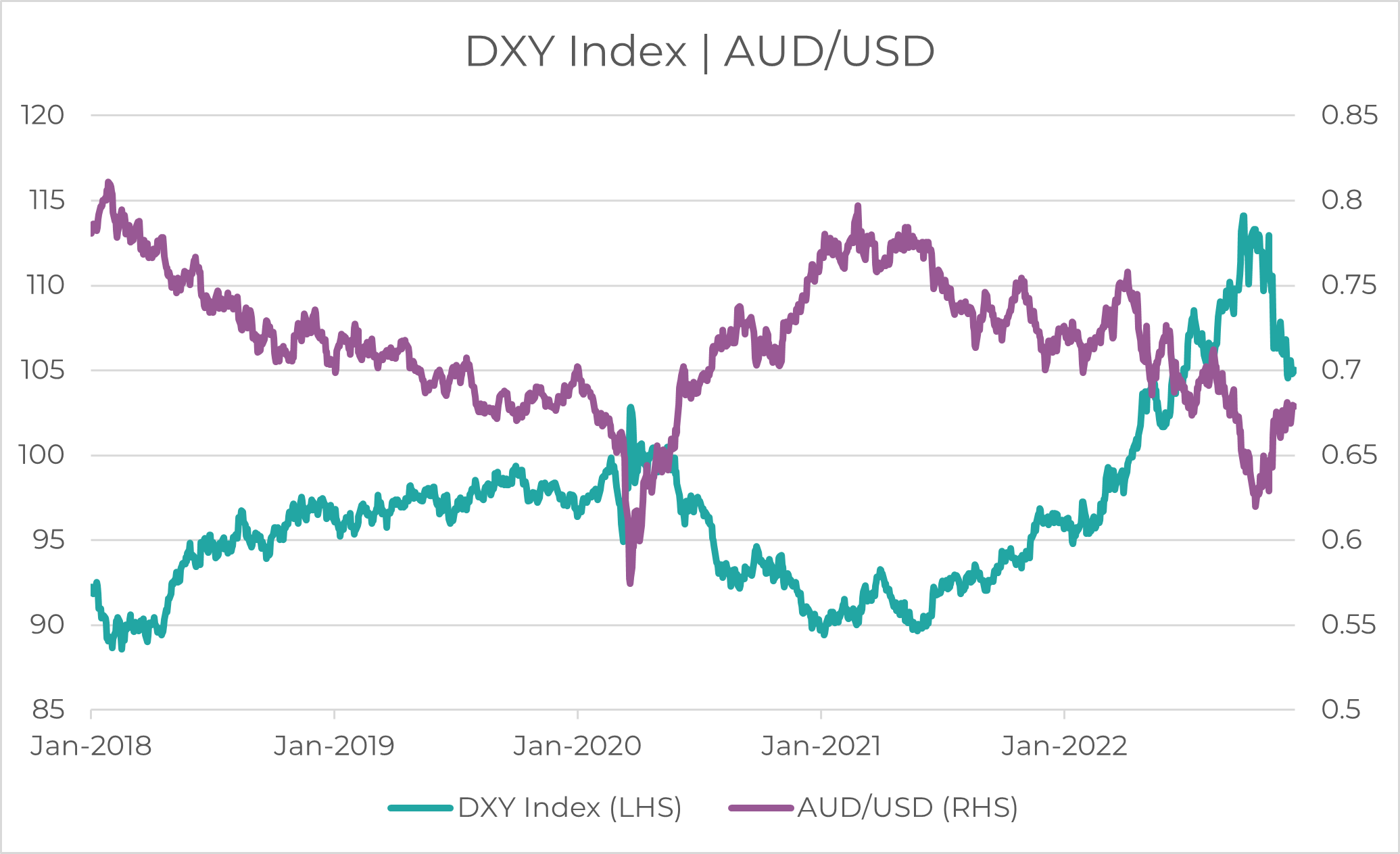
Valuations Now, Earnings When?
To conclude a note on the year, we of course need to talk about the bear market in risk assets and the story so far.
2022 has set multiple records for some of the worst returns in bond indexes, 60/40 portfolios – you name a passive exposure to a duration or growth-sensitive asset, and there’s a fair chance that 2022 has inflicted some damage.
Thus far, much of the downside in equities (and to some extent, credit) has been driven by a revision of valuations (the P in P/E) – coming down from historic levels, a rise in rates, the gravity of valuations, began to impact the multiples at which investors were willing to pay for future cashflows.
We include some of our in-house calculations for the CAPE 10 ratio – a cyclically adjusted price-to-earnings ratio that divides price by the average of 10 years of earnings, adjusted for inflation – to provide some context on how valuations have come down over 2022:
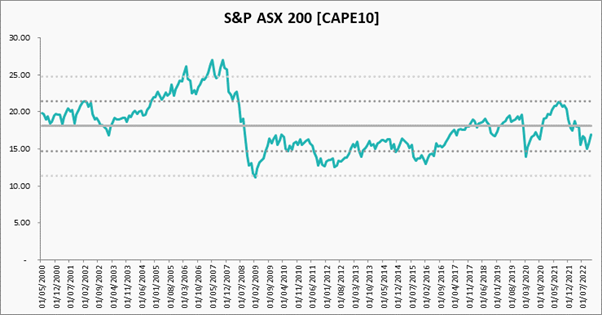
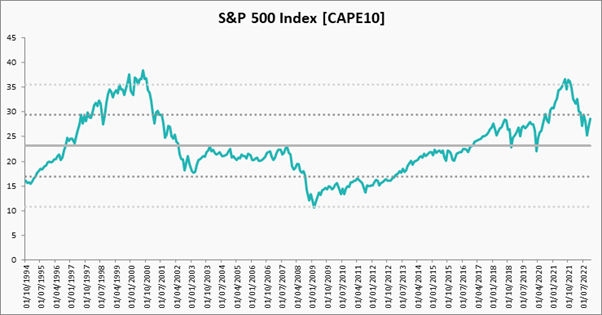
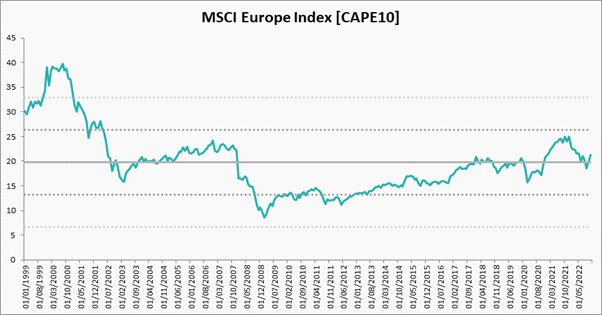
Many assets remain above their historical average, where to be considered “cheap” we would ideally see them at or below one standard deviation below the mean. So potentially, there is “still wood left to chop”.
This re-rating in valuation was also reflected in credit spreads, with investment grade credit not quite expanding to the magnitude of high-yield (one reason we believe IG credit has been a compelling holding during this year):
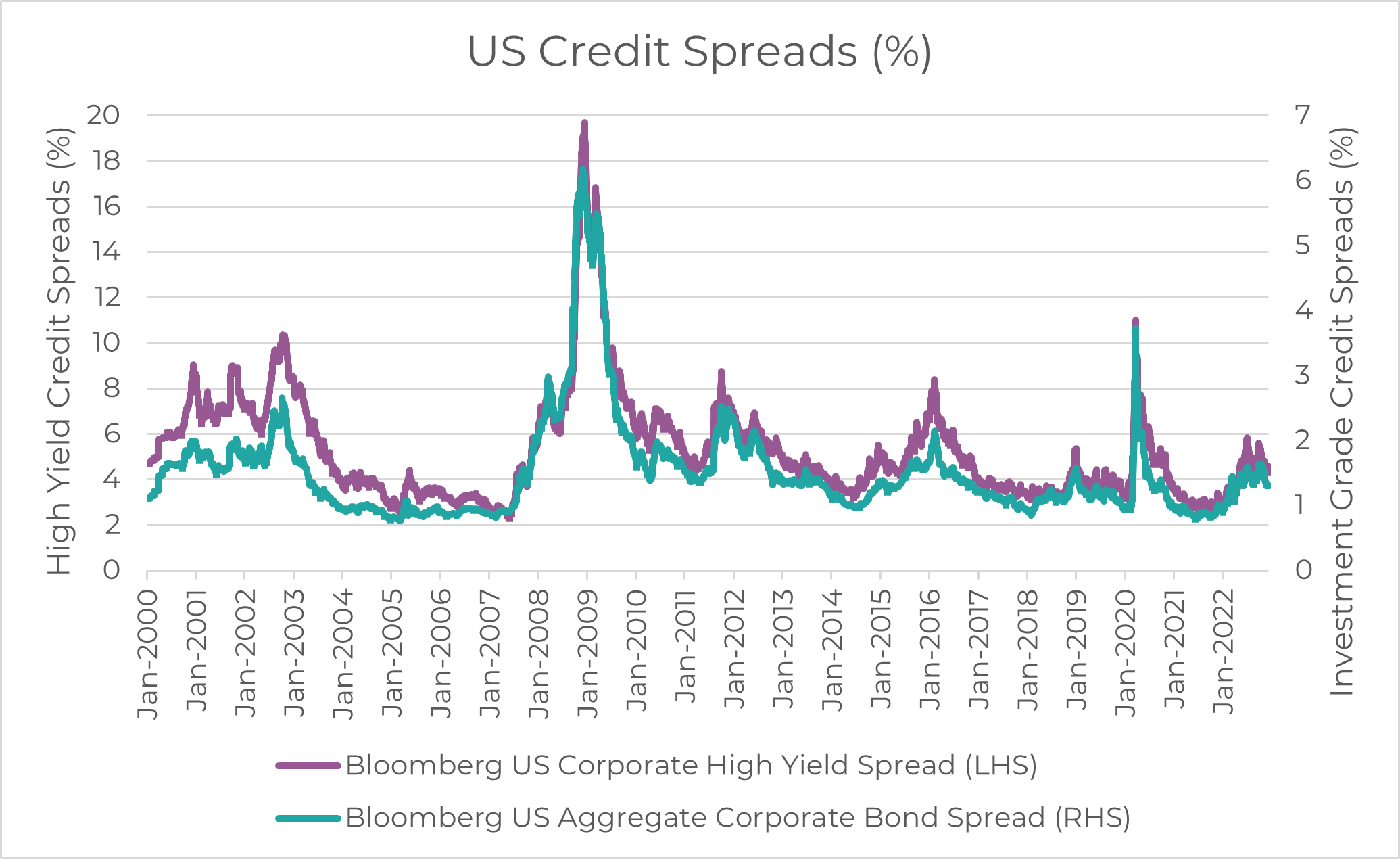
To close out this section and this note, we’d point to the severely depressed levels of equity capital market transactions (IPOs, capital raises), showing the lack of confidence in markets – a fact which is backed by business confidence surveys from throughout the year:
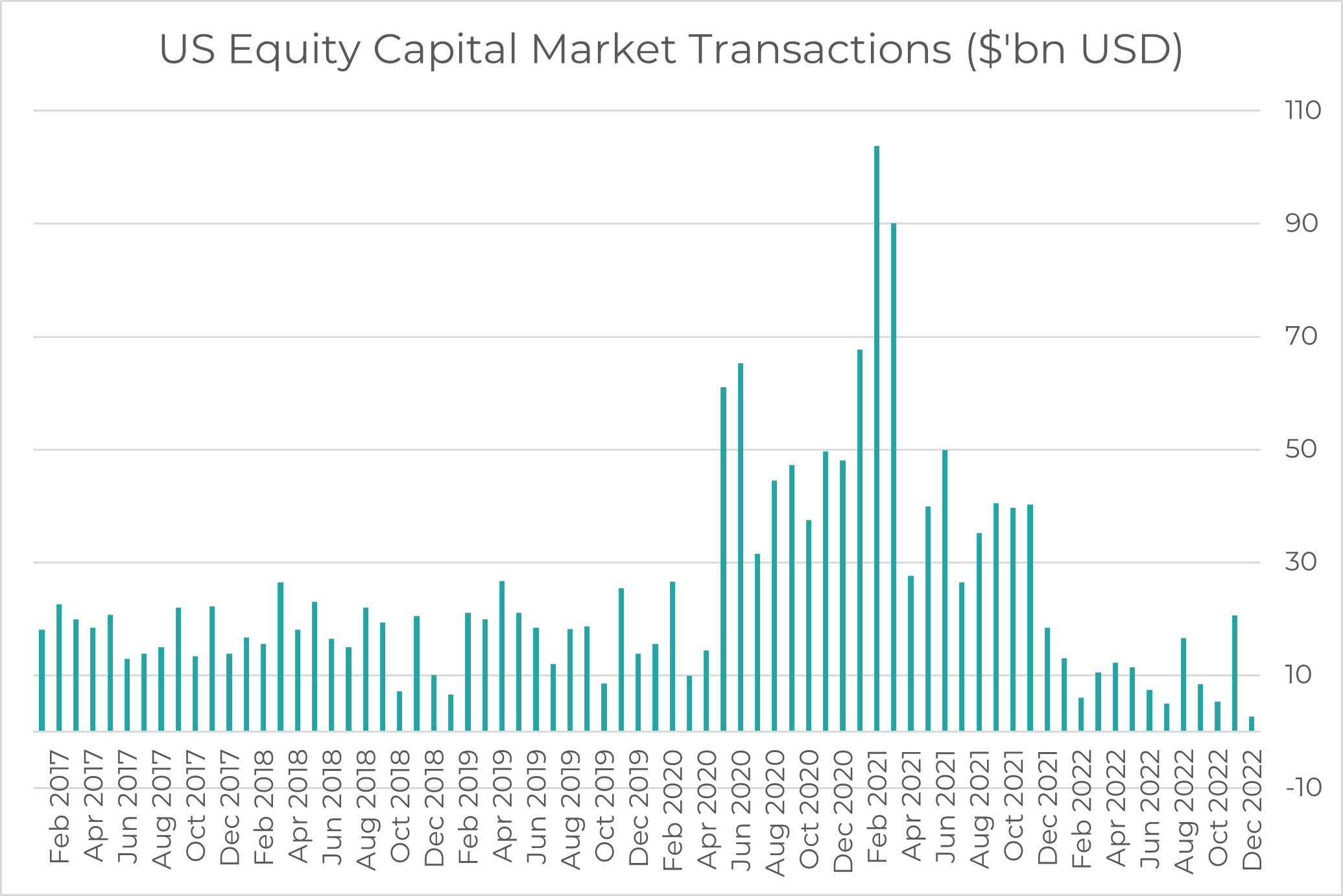
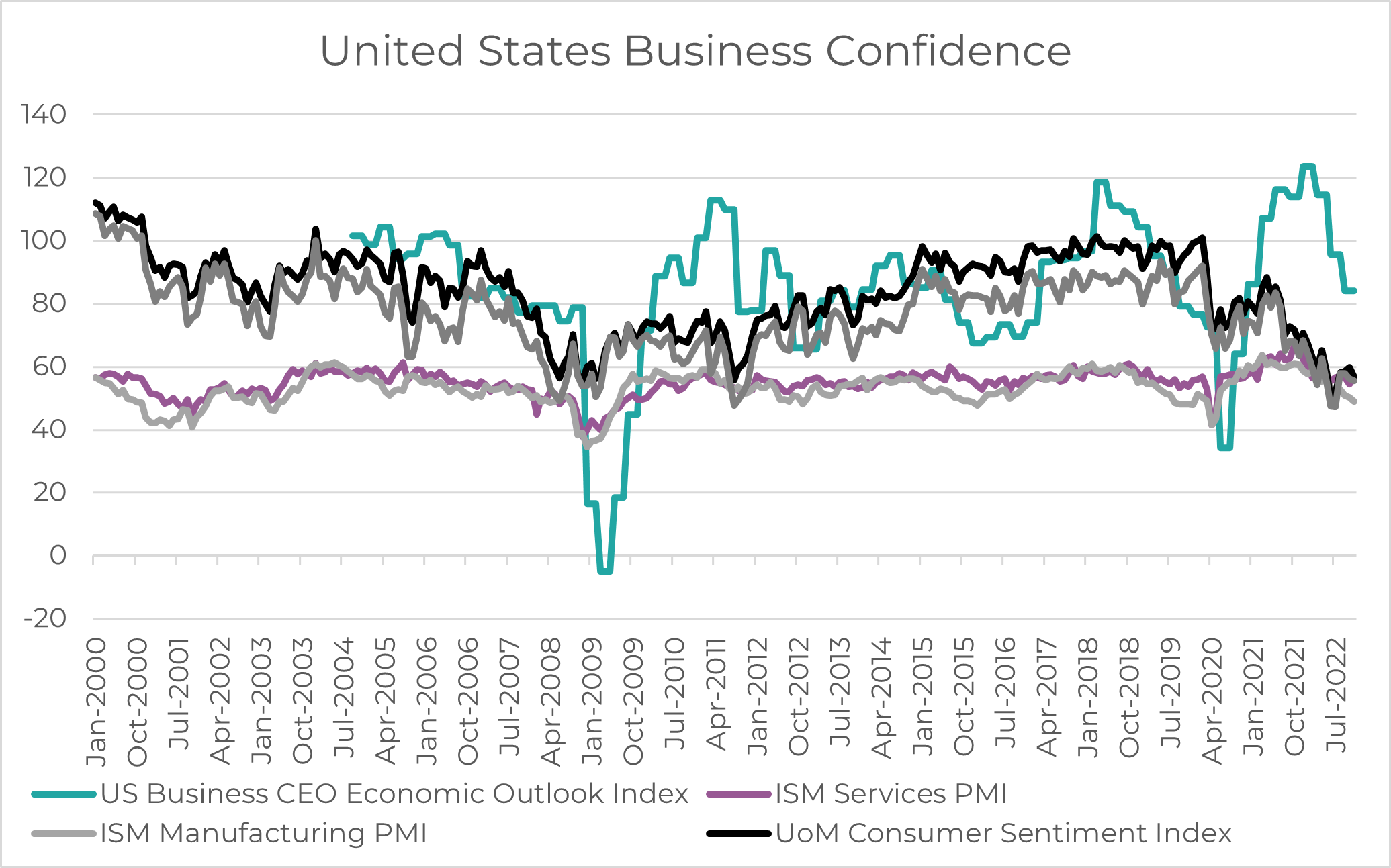
Quite the Year
2022 was a year to remember, a challenging time for investors, their advisors, businesses and consumers.
We take comfort in the knowledge that opportunities are being created today as a result of the turbulence of yesterday, a fact which should benefit clients in the years to come as we ride out a return to “normal market cycles”.
2023 is on the horizon, we wish everyone the best of luck in the New Year and look forward to the new market dynamics it may bring.
Have a safe and happy holidays.
Never miss an insight
If you're not an existing Livewire subscriber you can sign up to get free access to investment ideas and strategies from Australia's leading investors.
And you can follow my profile to stay up to date with other wires as they're published – don't forget to give them a “like”.
2 topics

